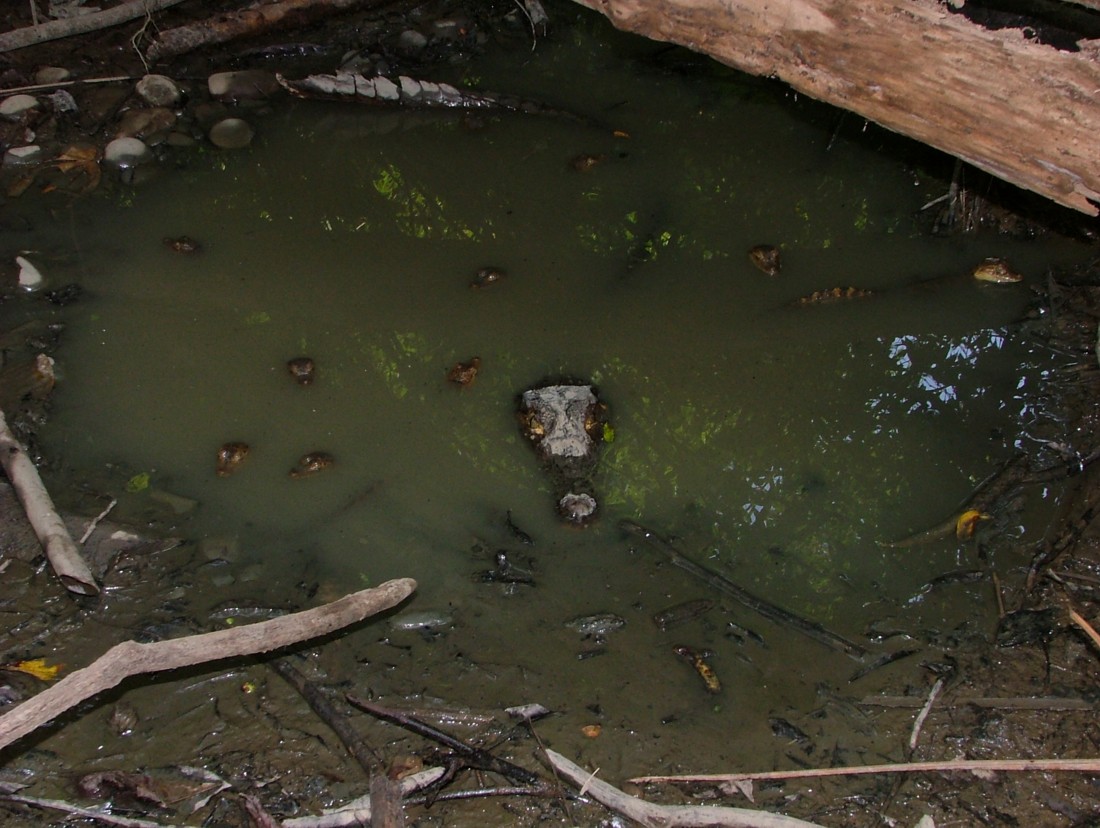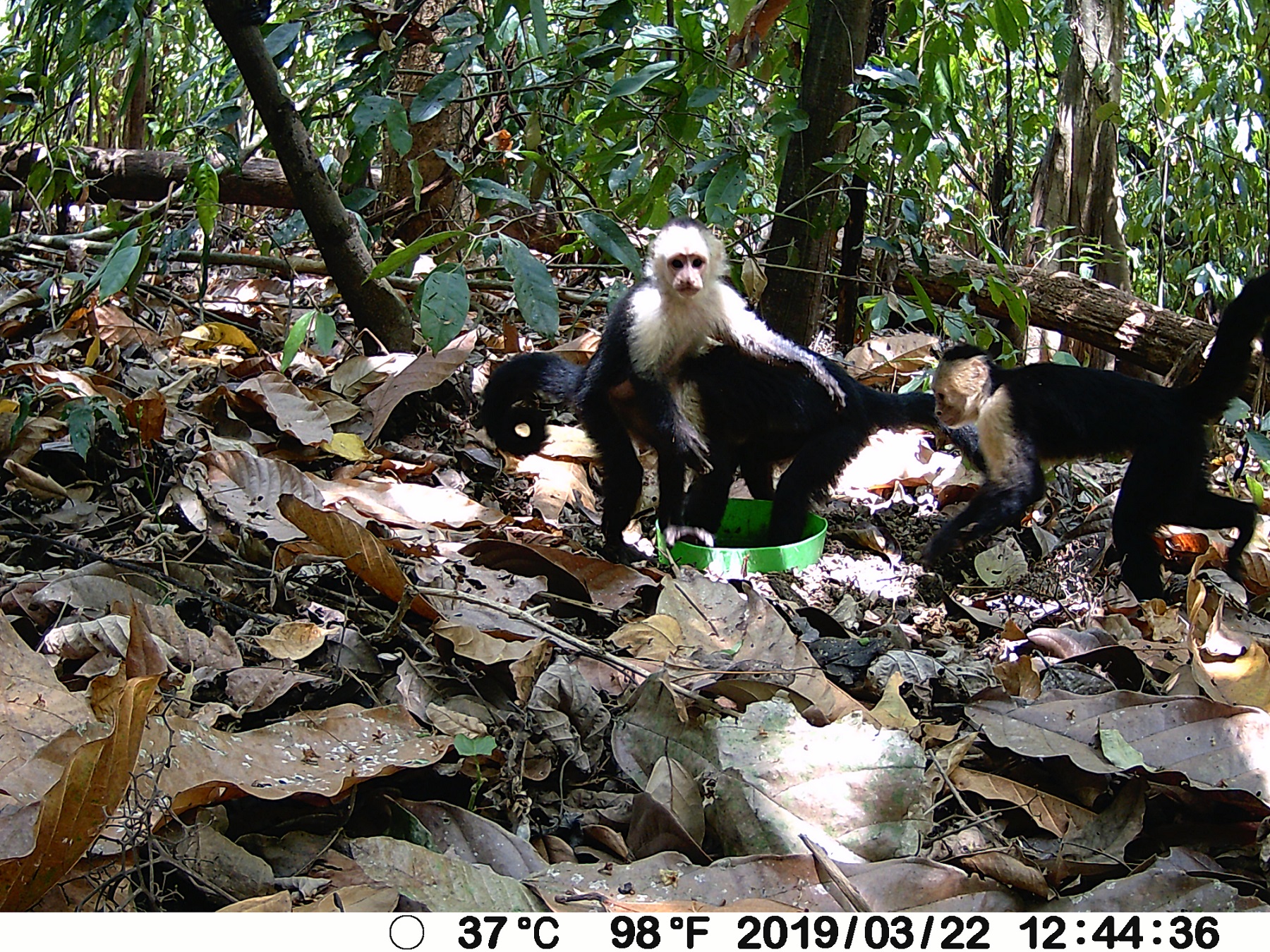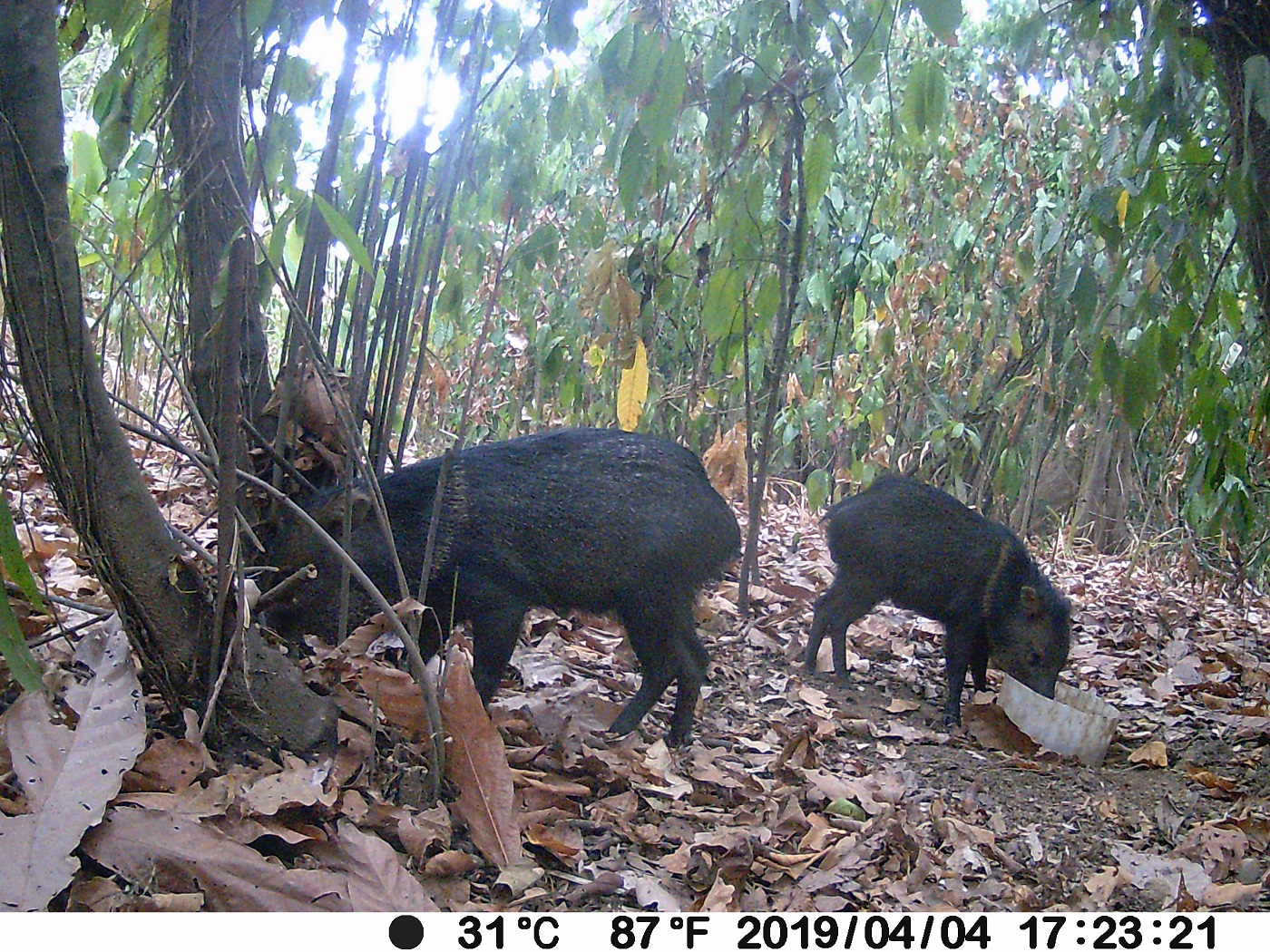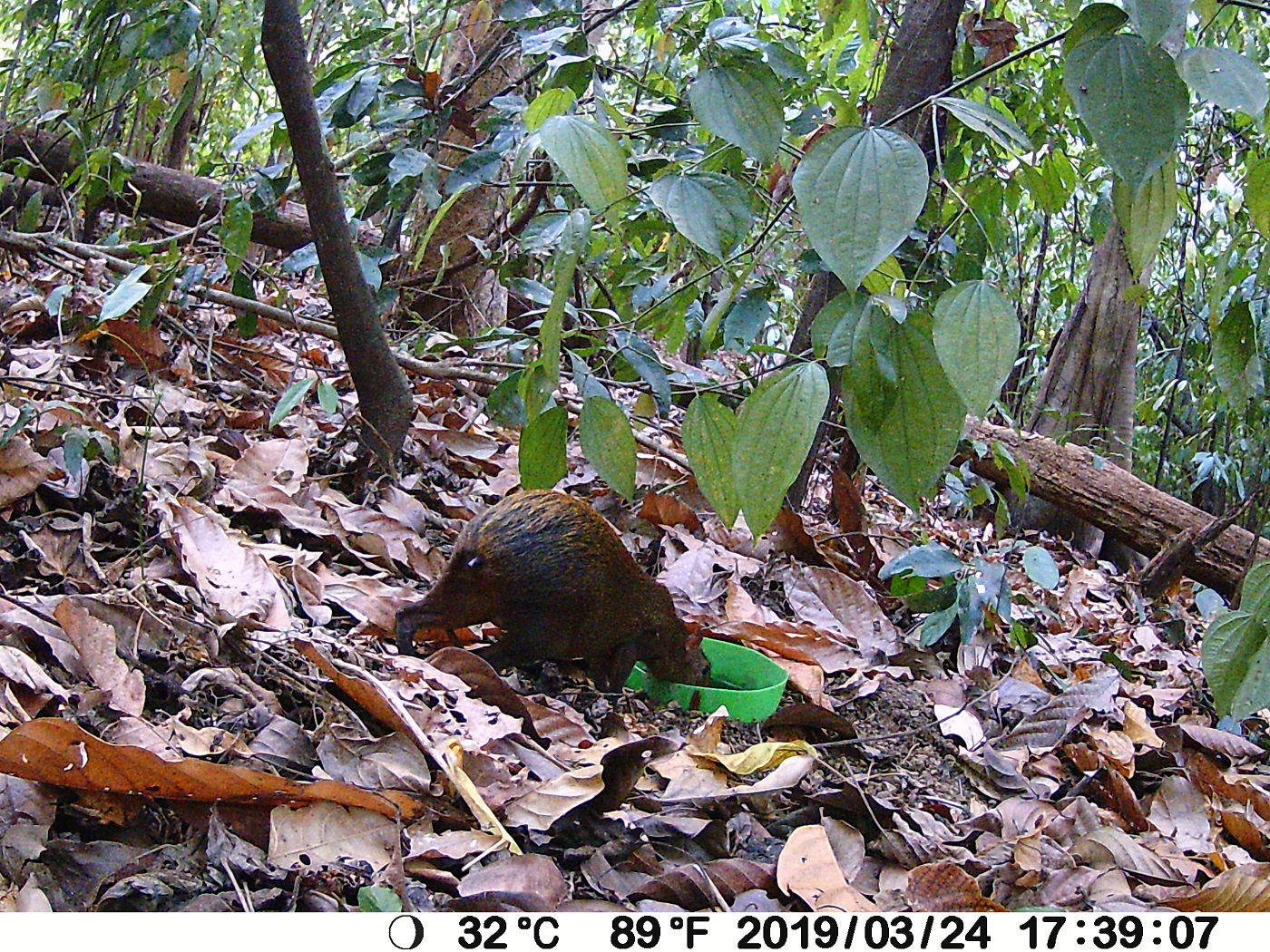THIRSTY WILDLIFE – By Jack Ewing
Music to my ears, raindrops on the roof. It has been a long time. Usually we get a little rain during the dry season, but this year not a drop. Three and a half months of exceptionally dry weather puts a lot of stress on the wildlife. The higher elevations of Hacienda Barú dry out faster, and many species migrate to the lowlands, but by the time the spring rains arrive there’s not much water anywhere.

As the streams and ponds recede most of the animal life can be found nearby. Predators learn that the thirsty prey animals are drawn to the last remaining pools. Baby caimans hatch in January and are easy to see in the few pools where water remains. Mama is always close at hand. Fortunately for the fruit eaters, many trees bloom and bear fruit in dry season, and this moisture laden nourishment helps relieve the thirst and the stress.

This year was so dry that we decided to locate some shallow containers in the forests near the lodge and fill them daily by carrying water in galon jugs. We placed trail cameras nearby to record the wildlife that visited the watering sites. Monkeys, agoutis, peccaries, and great curassows were the only animals to show up. The monkeys seemed to be more interested in playing in the water than drinking it. The peccaries fought over it, pulled the shallow containers out of the ground and carried them away. The agoutis and curassows snuck in and got a drink whenever neither of the other two were close at hand.

first rains are usually small showers, but moisture does collect in hollow spots in the trees, and animals quickly sniff them out and relieve their thirst. Hopefully, by the time you read this, rains will be falling and the long difficult dry season will be over.
Last night, Good Friday, it rained 29 millimeters (1.14 inches), and it’s raining right now. The animals, birds, snakes, frogs, bugs, and plants are all happy, and so am I.







